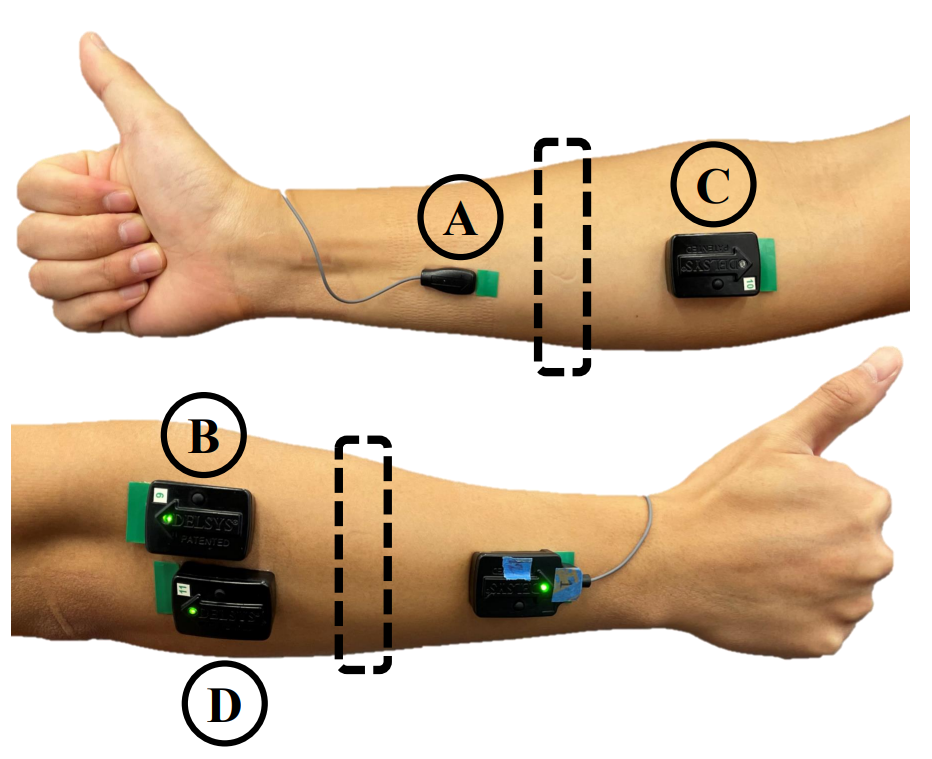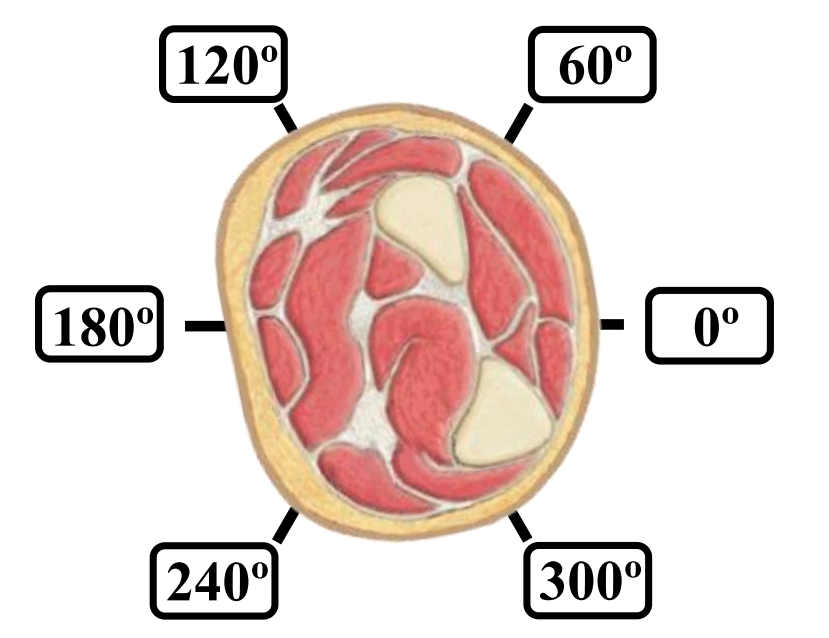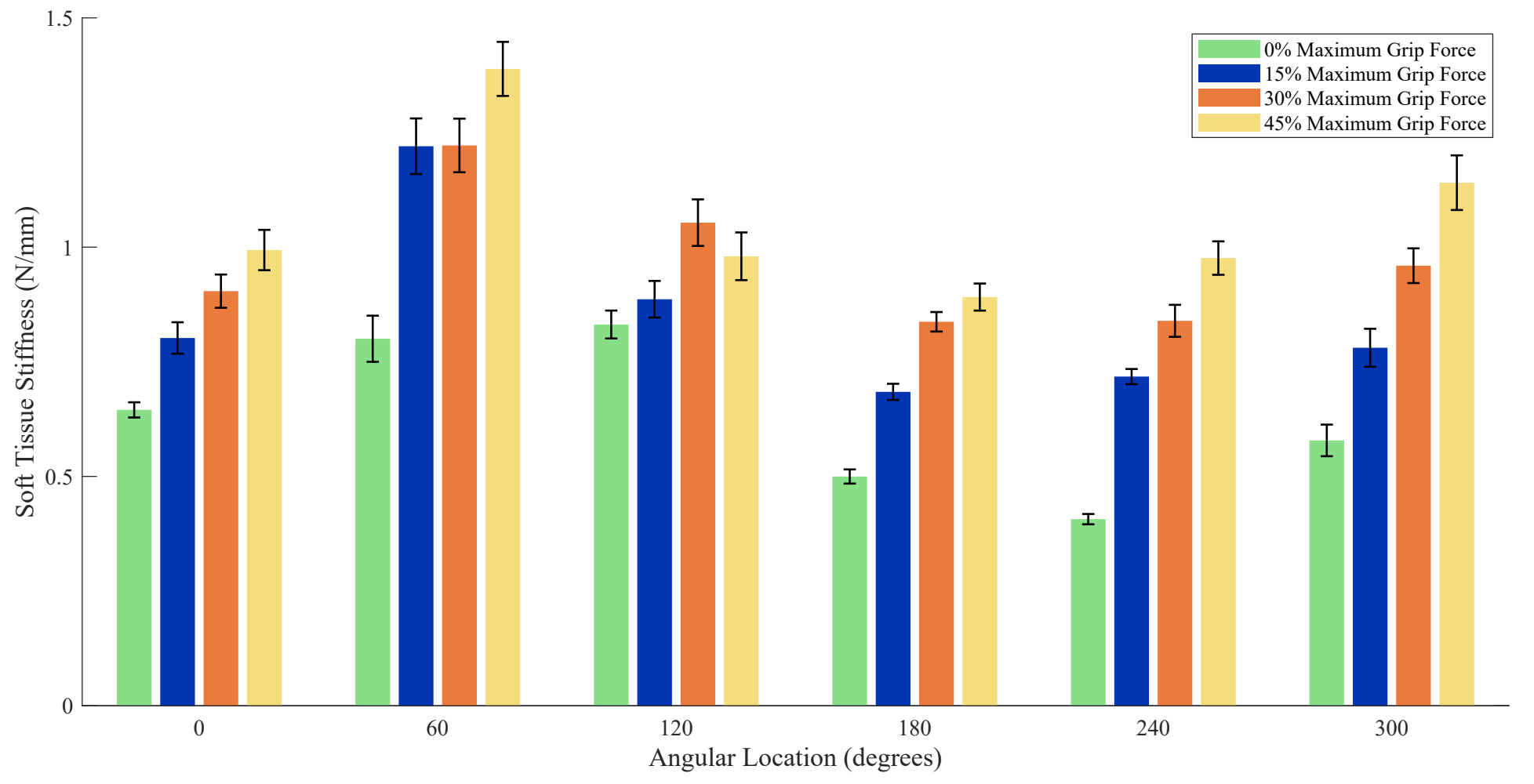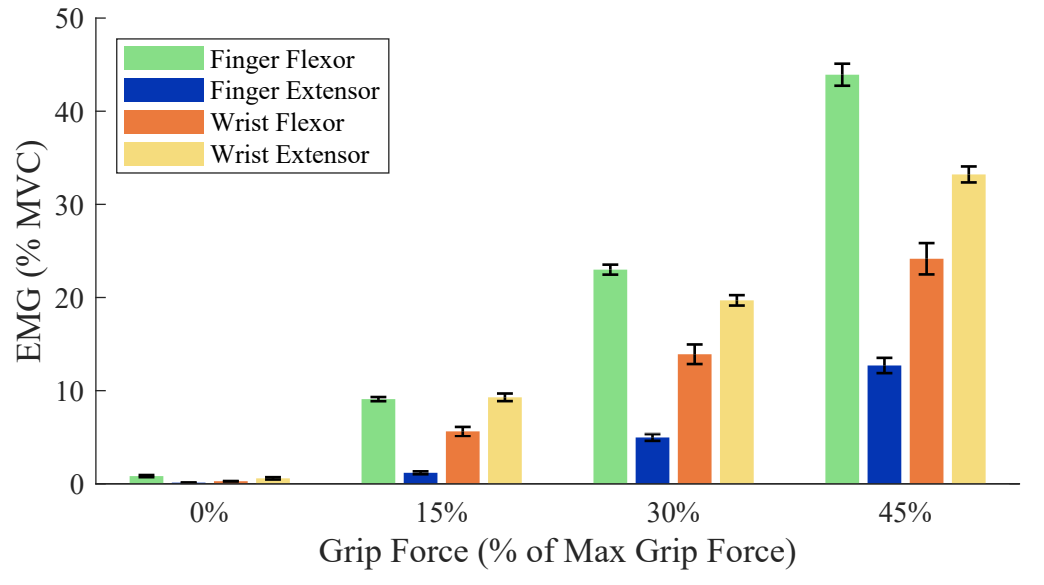Human Biomechanics Characterization through Soft Tissue Indentation
This research characterized soft tissue stiffness properties around the human forearm to understand how anatomical location and muscle activation affect human-robot interface behavior. The work established fundamental biomechanical data to inform human-centered design of wearable devices.
Contributions:
Conducted comprehensive tissue characterization study across 6 anatomical locations and 4 muscle activation levels with rigorous experimental controls (N=6 subjects)
Implemented automated indentation testing protocols with maximum voluntary contraction (MVC) normalization and randomized testing order to minimize confounding effects
Demonstrated statistically significant effects of angular location and muscle activation on forearm soft tissue stiffness through controlled biomechanical testing
Established quantitative biomechanical foundation for human-informed hypothesis formulation using force-displacement characterization and statistical analysis methods
Collaborators: Keya Ghonasgi, Paria Esmatloo, Ashish D. Deshpande
Related Publications:






